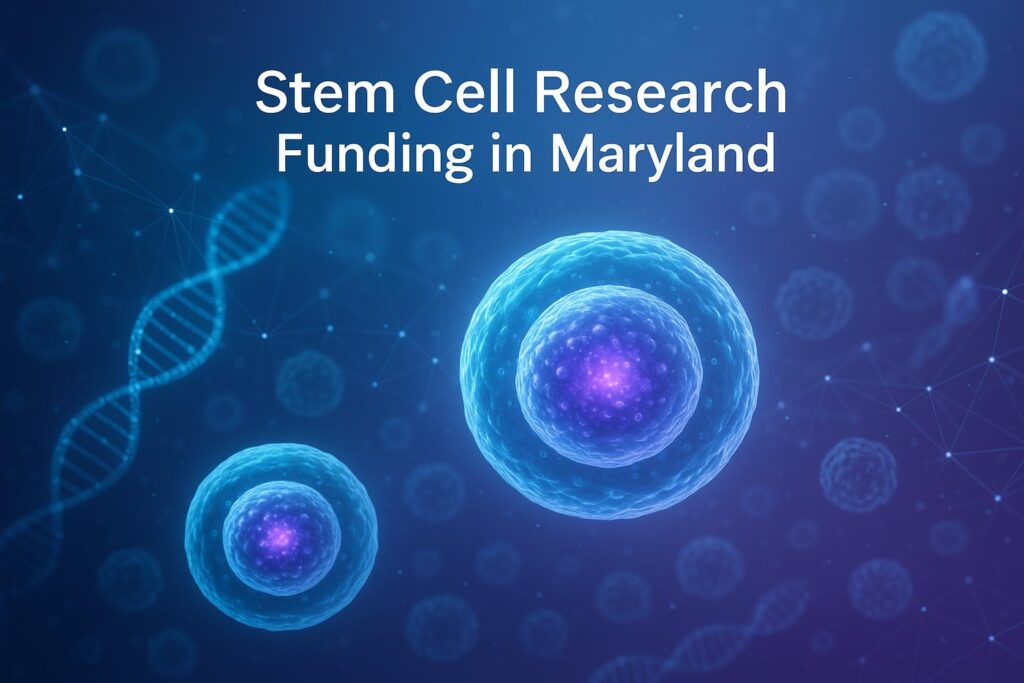A New Dawn in Autoimmune Skin Disorder Management
In the ever-evolving field of medicine, the quest to find more effective treatments for various ailments is perpetual. Among these, autoimmune skin disorders have long posed a significant challenge to both patients and healthcare professionals alike.
These conditions, where the body’s immune system mistakenly attacks its own skin tissue, can lead to debilitating symptoms and a marked reduction in the quality of life. However, a new era of hope is dawning, thanks to the groundbreaking advancements in stem cell research and regenerative medicine.
In recent years, the role of stem cells in wound healing and tissue repair has garnered significant attention. This is particularly true in the context of treating autoimmune skin disorders, where traditional therapies often fall short. Stem cell therapy, a pinnacle of regenerative medicine, offers a promising new avenue for not only managing these conditions but potentially reversing their effects.
This article delves into the transformative potential of stem cells in the realm of autoimmune skin disorder treatment. It aims to unravel how these miraculous cells can aid in wound healing, tissue regeneration, and ultimately, bring about a paradigm shift in therapy for these challenging conditions.
The Battle Within: Unpacking Autoimmune Skin Disorders
Autoimmune skin disorders represent a group of conditions where the body’s immune system, which is typically responsible for defending against infections and other external threats, turns against its own skin tissue. This misguided attack can lead to a range of symptoms, from mild irritation to severe, life-altering manifestations. Common autoimmune skin conditions include psoriasis, lupus, and scleroderma, each presenting unique challenges in terms of management and treatment.
The impact of these disorders extends beyond the physical symptoms. They can profoundly affect an individual’s emotional wellbeing, social interactions, and overall quality of life. Traditional treatments, while effective to an extent, often come with side effects and may not provide long-term relief.
This is where the promise of stem cell therapy, particularly the use of mesenchymal stem cells (MSCs) and other cell types, comes into the picture. By leveraging the inherent healing and regenerative capabilities of these cells, there is potential for not just managing symptoms, but truly healing damaged tissue.
Stem Cells Explained: The Building Blocks of Regenerative Medicine
To appreciate the role of stem cells in treating autoimmune skin disorders, one must first understand what these cells are and their capabilities. Stem cells are unique in their ability to differentiate into various cell types, making them invaluable in the field of tissue engineering and regenerative medicine.
They are the body’s raw materials, the cells from which all other specialized cells are generated. Under the right conditions, stem cells can divide to form more cells called daughter cells, which either become new stem cells (self-renewal) or specialized cells (differentiation) with a more specific function, like skin cells, blood cells, or brain cells.
There are different types of stem cells, each with its own potential in medical research and therapy. Embryonic stem cells, adult stem cells, and induced pluripotent stem cells (iPSCs) are among the most studied.
In the context of autoimmune skin disorders, mesenchymal stem cells (MSCs), which can be derived from bone marrow, adipose tissue, and even umbilical cord blood, are of particular interest. These cells are known for their ability to modulate the immune system, promote wound healing, and regenerate damaged tissue, making them ideal candidates for novel therapeutic approaches in autoimmune diseases.
In the next sections, we will explore how stem cells are being utilized to revolutionize treatments for autoimmune skin disorders, the challenges faced, and what the future holds in this exciting area of medicine.
Stem Cells to the Rescue: Treating Skin Disorders Like Never Before
The integration of stem cell therapy into the realm of treating autoimmune skin disorders is a testament to the incredible strides made in regenerative medicine. Stem cells, particularly mesenchymal stem cells (MSCs), have shown immense potential in promoting wound healing and tissue repair in damaged skin tissue. This section delves into the process, from stem cell extraction to application, and highlights the current research findings shaping this medical revolution.
The Process: From Lab to Skin
- Extraction: MSCs are typically extracted from bone marrow, adipose tissue, or umbilical cord blood.
- Cultivation: These cells are then cultivated and multiplied in a controlled laboratory environment.
- Differentiation: Under specific conditions, the stem cells are encouraged to differentiate into the desired cell type, such as skin cells.
- Application: The prepared cells are then applied to the affected skin areas, either through injections or topical applications.
Turning the Tide: The Advantages of Stem Cell Treatment in Skin Health
The advantages of utilizing stem cell therapy in dermatology are manifold. This innovative approach marks a significant departure from traditional treatments, offering a beacon of hope for those suffering from chronic and often debilitating skin conditions.
Benefits Over Traditional Therapies
- Targeted Treatment: Stem cells can be directed to differentiate into specific cell types, enabling a more precise approach to repairing damaged tissue.
- Reduced Side Effects: Unlike many conventional treatments that come with a range of side effects, stem cell therapy is often better tolerated.
- Long-Term Results: By addressing the underlying cause of the disorder, stem cell therapy holds the promise of longer-lasting outcomes.
Patient Testimonials: Real-Life Success Stories
Navigating the Challenges: The Future of Stem Cells in Skin Health
While the future of stem cell therapy in treating autoimmune skin disorders is undeniably bright, there are challenges and considerations that need to be addressed.
Current Challenges
- Ethical Concerns: Particularly with embryonic stem cells, ethical debates continue to shape the discourse.
- Technical Hurdles: Standardizing protocols for stem cell therapy remains a challenge.
- Regulatory Frameworks: Ensuring the safe and effective use of stem cells requires robust regulatory oversight.
Looking Ahead: Future Research and Breakthroughs
- Enhanced Techniques: Ongoing research is focused on refining stem cell extraction and application methods.
- Patient Advocacy: Increased awareness and advocacy can play a pivotal role in advancing stem cell research and therapy.
- Regulatory Advances: The establishment of clear guidelines and regulations will be crucial for the safe expansion of stem cell therapies.
Conclusion: Embracing a Future of Renewed Skin Health Through Stem Cells
The exploration of stem cell therapy in treating autoimmune skin disorders heralds a new chapter in regenerative medicine. This innovative approach transcends traditional methodologies, offering not just symptom relief but the potential for lasting healing and recovery. The implications of this for individuals suffering from debilitating skin conditions are profound and far-reaching.
The Paradigm Shift in Skin Disorder Treatment
- Revolutionary Approach: Stem cell therapy represents a seismic shift from conventional treatments, focusing on healing and tissue regeneration rather than mere symptom management.
- Empowering Patients: This form of therapy offers patients a more active role in their treatment, providing a sense of hope and empowerment in their journey towards recovery.
The Evolving Landscape of Skin Health Treatments
- Continuous Advancements: The field of stem cell research is rapidly evolving, with new discoveries and innovations emerging regularly. This ensures that treatments remain at the cutting edge of science and technology.
- Broader Implications: The success of stem cell therapy in skin health has broader implications for its use in other autoimmune diseases and disorders. It opens doors to potential treatments that were previously considered unattainable.
FAQ
Q: What are stem cells and how do they contribute to wound healing?
A: Stem cells are undifferentiated cells that have the unique ability to develop into different types of cells in the body and contribute to the healing and repair of tissues, including skin tissue.
Q: What is tissue engineering and how does it relate to skin regeneration?
A: Tissue engineering is the field of biomedical engineering focused on creating biological substitutes to restore, maintain, or improve tissue function. In the context of skin regeneration, tissue engineering aims to develop innovative approaches for treating autoimmune skin disorders and promoting wound healing.
Q: How do different types of stem cells play a role in the therapeutics for wound healing?
A: Various types of stem cells, such as adipose-derived stem cells, bone marrow mesenchymal stem cells, and epidermal stem cells, are being studied for their potential in accelerating wound healing, promoting skin tissue regeneration, and improving the overall wound repair process.
Q: What are the phases of wound healing, and how do stem cells promote wound closure?
A: Wound healing typically involves four overlapping phases: hemostasis, inflammation, proliferation, and remodeling. Stem cells have been shown to promote these processes by enhancing tissue regeneration, reducing scar tissue formation, and facilitating the closure of skin wounds.
Q: What role do mesenchymal stem cell-derived exosomes play in regenerative wound healing?
A: Mesenchymal stem cell-derived exosomes are small vesicles released by stem cells, which contain bioactive molecules that can modulate cellular processes. These exosomes have shown potential in promoting regenerative wound healing by modulating the immune response, promoting tissue regeneration, and improving wound closure.
Q: How has stem cell therapy emerged as a potential treatment for autoimmune skin disorders?
A: Stem cell therapy has garnered attention for its potential to address autoimmune skin disorders by harnessing the regenerative properties of stem cells to accelerate wound healing, promote skin tissue regeneration, and modulate the inflammatory response associated with these conditions.
Q: What are the key benefits of using stem cells in the context of skin tissue engineering and regenerative medicine?
A: Stem cells offer the potential to enhance wound healing, promote tissue regeneration, minimize scarring, and improve the overall quality of skin tissue in individuals with autoimmune skin disorders. These benefits highlight the promising role of stem cells in advancing the field of regenerative medicine.
Q: How do mesenchymal stem cells promote wound healing and repair?
A: Mesenchymal stem cells have been found to exert beneficial effects on wound healing and repair by modulating immune responses, promoting the formation of granulation tissue, facilitating wound closure, and enhancing the overall healing process in skin tissue.
Q: What are the different types of cells that contribute to wound healing and how do they interact with stem cells?
A: Various cells, including immune cells, endothelial cells, and progenitor cells, play vital roles in the wound healing process. When introduced into the wound microenvironment, stem cells interact with these cell types to modulate the immune response, promote angiogenesis, and support tissue regeneration, ultimately contributing to improved wound healing.
Q: How can stem cell transplantation be utilized to accelerate wound healing and improve outcomes for individuals with autoimmune skin disorders?
A: Stem cell transplantation holds potential for accelerating wound healing and improving outcomes in individuals with autoimmune skin disorders by harnessing the regenerative properties of stem cells to promote skin tissue regeneration, enhance wound closure, and expedite the healing process in chronic wounds.



